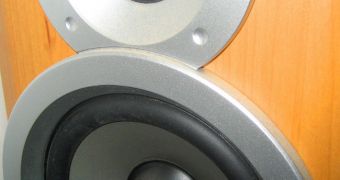A group of American researchers from the Stanford University have recently announced that they are working on a new type of therapy destined to fight hearing loss. They say that their approach, which is based on using stem cells, could provide patients with a way out of their predicament. What the study team is trying to accomplish is creating cultures of cells that could be used to replace damaged areas in various portions of the human ear. The investigation, which is currently being conducted on unsuspecting lab mice, holds great promise for the future, Wired reports.
The research team, led by Stefan Heller, adds that it managed to gain new insights into how the inner ear perceives sounds as well. “We basically looked at how nature makes the inner ear, and what is known about the developmental processes involved, and then we just mimicked them in a test tube,” explains Heller. Additional details of the work are published in the May 14 issue of the esteemed scientific journal Cell. The document reveals that the team took an active interest in specialized, hair-like cells, which reside in the inner ear, and that are believed to play an important role in hearing.
Unlike sight or other sensory perceptions, hearing is somewhat of a mystery. Reaching the inner ear is notoriously difficult, and therefore studies have only yielded moderately-accurate results. What scientists do know is that the hair cells inside the ear vibrate when sound waves hit them, and that these vibrations are converted to electrical impulses, which then travel to the auditory cortex. However, how this transformation takes place has remained a mystery, and a reason for heated debate for a long time. One of the most interesting things to note about hair cells is that they tend not to regenerate after dying.
What Heller and his team did was use mouse-derived embryonic stem cells to produce structures resembling the hair cells of the human inner ear. By using a scanning electron microscope, the investigators were able to produce a set of cells that had the looks and functions of their human counterparts. Bombarding the cells with electrons showed that they formed bundles, featuring individual components of varying heights. Stimulating these bundles mechanically, with a thin piece of glass, resulted in the production of electrical signals that resembled the ones researchers were hoping to find.

 14 DAY TRIAL //
14 DAY TRIAL //